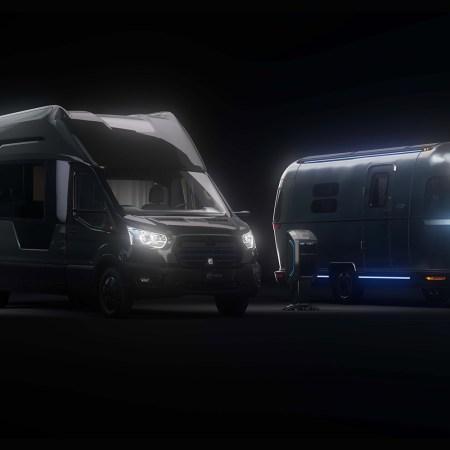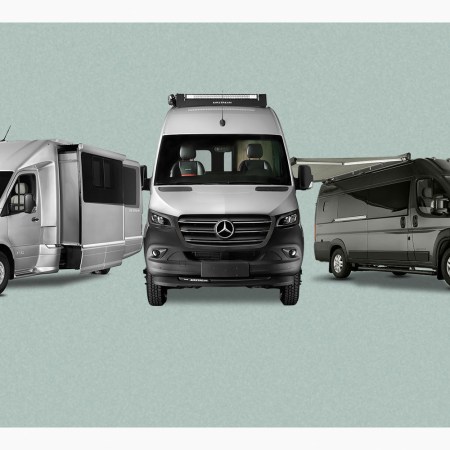Around this time a year ago at the RV SuperShow in Florida, Winnebago unveiled the e-RV, an electric concept built on a Ford Transit platform. It looked great. The only problem is that the estimated battery range was just 125 miles, which was a disappointing figure for people whose goal is to road trip. But this was just a debut concept, and the company said at the time that “mileage range increases are anticipated as the concept vehicle further develops.”
It’s now 2023, the RV SuperShow is once again on this week, and Winnebago is back with a second iteration of this vehicle, the eRV2. Unfortunately, the range estimates are even lower than they were before: 108 miles. (Although, during testing, Winnebago says they’ve seen between 100 and 140 miles of range “in typical RV driving conditions,” per Car and Driver.)
If you only looked at that figure, this would be an obvious red flag. RV owners expect to drive much farther than that before needing to fill up. But if you dive into how the eRV2 differs from the e-RV, you can see the company is headed in the right direction to eventually provide a legitimately exciting option for electrified RVing.

For the new prototype, Winnebago made a big change in its starter vehicle. The company previously used a regular Ford Transit platform with an electric powertrain developed by the company Lightning eMotors, which specializes in commercial vehicles, for the original e-RV concept. Here in the eRV2, they’ve adopted the chassis of the Ford E-Transit, that automaker’s proprietary all-electric cargo van which debuted in 2022. And that’s where Winnebago is getting the stated range number from, as the E-Transit with a high roof (it’s also available in medium and low roof models) is rated at 108 miles of range. While that’s lower than many would like, the Winnebago said in a press release that they’re “actively pursuing range extension opportunities.”
While they’re relying more on Ford’s tech for the main vehicle, Winnebago is using its RV knowhow for other parts of the electrical system, partnering with Lithionics on a proprietary “house battery,” the one that powers amenities like the refrigerator, which “features a 48V system with more than 15,000 usable watt-hours, and a unique thin lay-flat design stored beneath the floor to maximize interior space.”

There are other interesting features in the eRV2, including solar panels that can reportedly provide up to seven days of off-grid camping. But what people really want to know is: will this thing be practical when it’s finally available to order?
The argument in favor of Winnebago starts with the fact that there’s nothing set in stone just yet. While the company said they are hoping to share the final chassis configuration for their first production eRV “later this year,” that model could change significantly from this current prototype. Russ Garfin, product manager at Winnebago for conversion vans and Class C motorhomes, said that they could even switch from a Ford vehicle to one from Mercedes or Stellantis, according to Autoweek. It just depends on who has the most compelling option.
Furthermore, Winnebago is a leader in the RV space for a reason. They know what their customers want, so they’re putting in the necessary testing to figure out how they can meet those goals with an electric vehicle. This summer, for instance, the company completed a 1,300-mile road trip in the original e-RV concept from Washington, D.C. to Minnesota to “test and document real world performance factors and gather additional data that will drive further refinements as the technology is assimilated into future production vehicles.”
You can bet they’ll be doing the same with the eRV2, not just carting people around in a loop at the RV SuperShow. So if you’re doubtful about an electric RV, just wait until the final specs are set. But if you’re excited, like I am, there’s plenty more on the way from other brands as well.
Thanks for reading InsideHook. Sign up for our daily newsletter and be in the know.

















